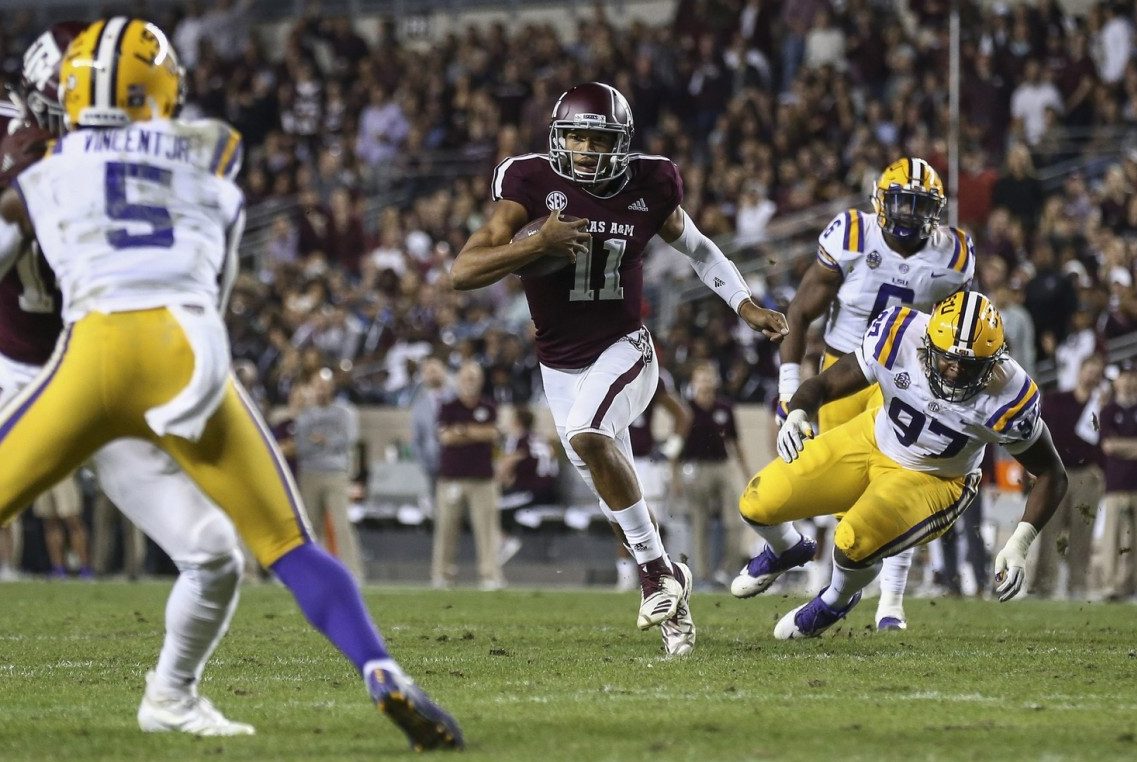MORGANTOWN — Maybe you tuned in for the conclusion of the LSU-Texas A&M football game last November, unwittingly wound up watching all seven overtimes and emerged a Sunday morning zombie mumbling like Ed Orgeron.
Now, imagine how fatigued the players felt.
The NCAA rules committee, not keen to the idea of games stretching into infinity, has tweaked its rules for OT. Starting next fall, in the fifth overtime, teams will alternate two-point plays rather than starting offensive possessions at the 25-yard line
The upside is we’re less likely to experience a once-in-a-millennium contest that stretches in 13 overtimes with players trading game balls for IV bags.
The downside is college football now has three — count ’em, three — sets of OT rules. The first two periods still can feature PATs after touchdowns, while the third overtime still finds teams compelled to go for two points after a TD.
Now comes the fifth-overtime amendment, when the game is condensed to a 3-yard field.
Even the NCAA acknowledged the OT change was implemented “to bring the game to a conclusion.” Seems the NCAA could have simplified things by backing up offenses to the 40-yard line (instead of the 25) and forcing teams to actually earn positive yardage before they reached field-goal range.
Then again, was there really that much of an overtime problem in need of solving?
Across the 23 seasons since college football added overtime, only 11 FBS games have stretched into five OTs. And that record-tying LSU-Texas A&M matchup marked only the fifth occasion in which a game needed seven extra periods.
[West Virginia has participated in 11 overtime games, four of which reached triple-OT.]
Clearly, the NCAA rules panel is worried about overexertion of players in an era where no-huddle offenses drive up snap-counts. And those safety concerns are congruent with the new push to penalize all blind-side blocks.
Then came Tuesday’s targeting update, which I think fans will welcome because it affords the replay booth more flexibility to overturn on-the-field ejections.
We saw wildly inconsistent application of targeting reversals last season, with no-intent-to-harm tackles resulting in ejections and more violent blows escaping punishment.
Moving forward, the replay booth must decisively rule that targeting is confirmed or overturned — no more wishy-washiness of saying the call “stands.” And whereas officials previously were instructed to err on the side of targeting, now the NCAA has clarified: “If any element of targeting cannot be confirmed, the replay official will overturn the targeting foul.”
That portends some aggressive but non-vicious hits will be OK. The hit by Oklahoma’s Robert Barnes on West Virginia’s Marcus Simms in the regular-season finale springs to mind. Barnes made obvious helmet-to-helmet contact on the receiver, though in doing so, Barnes did not launch. Simms also lowered his head when Barnes entered as a second-attacker on the football, mitigating the perception Barnes was aiming for the head or neck area of a defenseless player.
That last paragraph only serves to highlight something no NCAA rule can eliminate — the vast acreage between opposing fans who disagree.
TWITTER @GAllanTaylor




